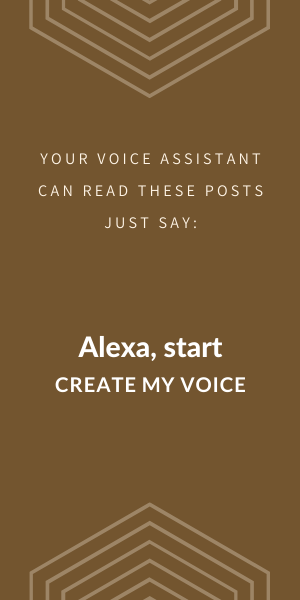The use of voice to search for information online is growing at an exponential rate throughout the world. A recent study by Adobe showed that in 2019, voice-based web searches consisted of 48% of the entire general web searches. According to Gartner, 30% of all online searches in 2020 will be made on devices without screens.
Meanwhile, Juniper Research reported that 3.25 billion voice assistants were used in 2019. The same research study also predicted that the number would go up to 8 billion by 2023. The reasons for this may include ease of use, convenience, or intuitiveness. However, what is certain is that the trend towards voice search and control is speeding up.
This essentially means that marketing, brand advertising, and client engagement will tilt towards voice-based search, manipulation, and control. Thus, voice UX will have to evolve for marketers, influencers, and brands to become more capable tools. The core voice user experience will have to change for global adoption to take place.
Here are 4 elements of Voice UX that need to evolve for greater consumer adoption and brand integration.
Aspects of the Voice User Experience (VUX) that Need Improvement
Little Room for Error
When it comes to voice search, there is very little room for error. A user’s question, statement, or instruction must be understood immediately by the voice assistant. While responses to questions about the weather, match scores, or the height of Everest are easy to contextualize, not much else is.
Right now, each voice assistant uses a different source to answer a voice search. For Google Assistant devices, you can see the answer that will be read by the Google Voice Assistant highlighted as a featured snippet at the top of a Google search. The other voice assistants (like Alexa and Siri and Bixby) do not use the Google Search Featured Snippet, though. Each voice assistant creates its own set of answers for each voice search.
For voice assistants to become more useful, they will need to provide better and consistently accurate responses to voice searches. And as people rely on voice assistants more, voice commands will become more complicated as a result of their convenience. More complexity means greater room for error, which will require even more effort by the voice assistants to continually improve their accuracy.
Context
Expanding on the need to eliminate errors, context is going to be very important for voice search. What each customer needs or wants is often connected to previous requests, past search history, individual preferences, and conversational tone. In addition, local customs, dialect, and slang terms must also be taken into account when determining the meaning or intention of a voice search.
While understanding the exact meaning of a person’s words is not easy, research done by Search Engine Watch shows that searches involving a location are three times more likely to be voice-based than text-based. They’re also more likely to be questions. Here, there is more room for context development than any other. Voice assistants can be used for more than answering questions and doing searches after all.
They can be used to access information from websites, control devices, and provide unique brand experiences. Brand owners need to lead the way on this and claim their verbal domain name (also known as an invocation name). By claiming a verbal domain name, the brand owner can tailor a specific experience for an audience. Otherwise, search engines will beat them to the punch. In other words, someone else will decide what people hear when they ask for brand information.
Companies must also focus on device-based SEO. Depending on the device, users will be more likely to relay certain commands or ask certain questions. Smartphones, being more personal devices, will be used to input more individualistic questions. Smart speakers, being less personal and more catered towards family use and control of smart appliances will receive collective queries.
Security and Trust
A report from Microsoft has highlighted that 41% of voice assistant users are concerned about privacy and trust. A study by Northeastern University and Imperial College London revealed smart speakers may be accidentally triggered 19 times a day. And Norton Security has highlighted the obvious that voice assistants are always listening. While the device can increase efficiency, and offer a lot of convenience, people must be comfortable that their privacy is being protected.
Protecting privacy is the responsibility of smart speaker manufacturers, digital voice assistants, and the companies and brand owners who create Voice UX for these devices. The challenge will be to continue to make the user experience better while also promoting trust. Voice search is already being used to order things online, book tickets, plan entire days, etc. Ensuring that the information is protected and only used to benefit the user is a challenge, which needs to be solved.
Usability
A limited study performed in 2018 by the Nielsen Norman Group, based in New York and California showed poor usability results. While much work has been done on user experience and voice assistant usability, there is still much room for improvement. Voice assistant functionality and Voice UX continue to focus on simple commands. Google demonstrated Google Duplex, in 2018, which showed the potential of a Voice UX but moving that experience from a controlled environment to the real-world is a challenge.
Voice UX needs to dramatically improve itself to handle more complex searches and commands. It must specifically improve in regards to contextualizing statements and intent. Voice technology needs to provide the correct responses to the user’s intention and promote trust and security while simultaneously delivering an exceptional Voice User experience.
Smart speakers continue to be used by more and more people and voice assistants are showing up in more devices and environments. Now is the time for companies and brand owners to secure their Verbal Domain Name and ensure a positive client voice user experience.


